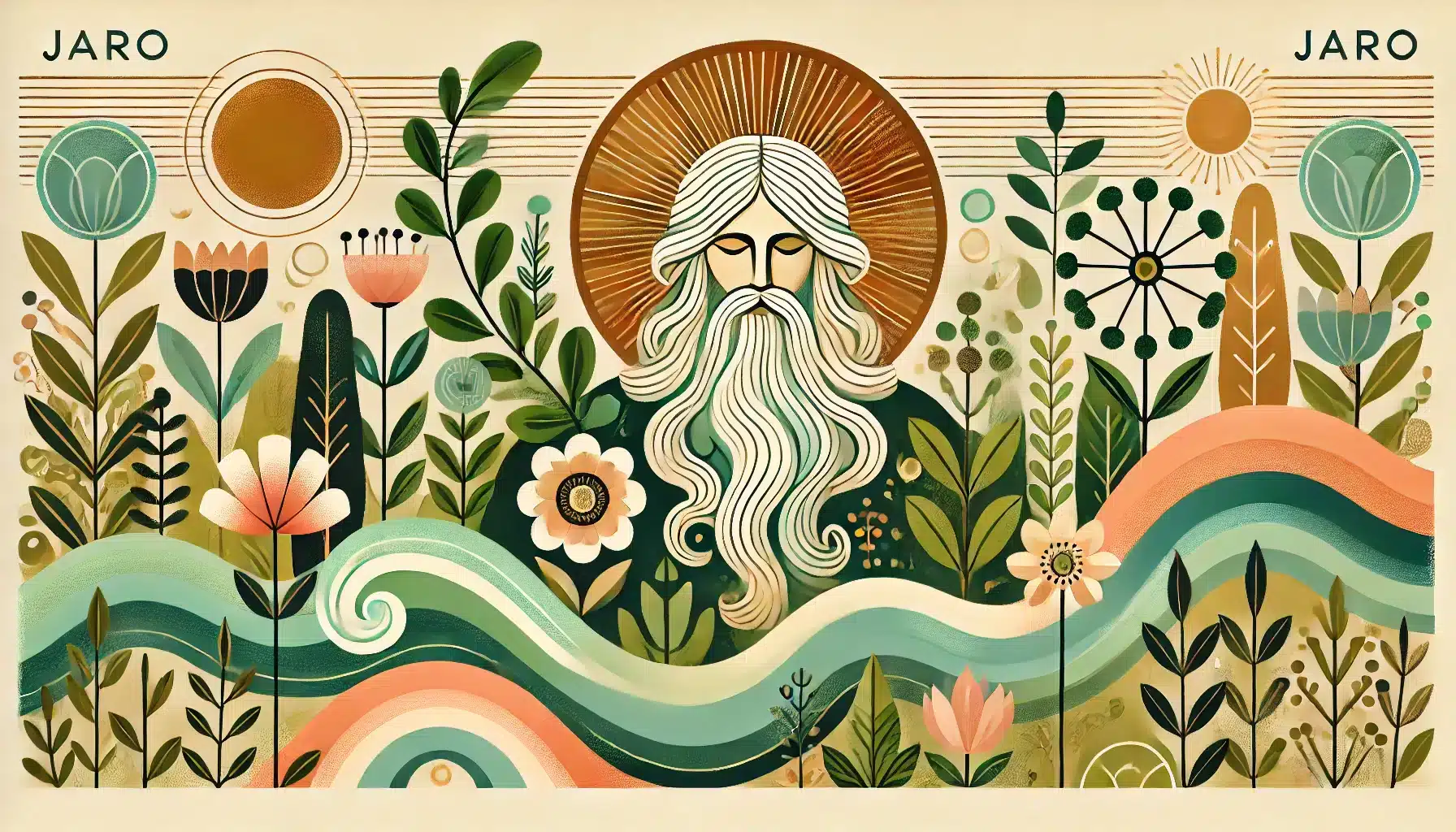Jaro, also known as Jarilo or Gerovit in some Slavic traditions, is the Slavic deity who embodies the energy and renewal of spring. His name is derived from the Slavic root jar, meaning strength, youth, and spring. As a god of fertility, he symbolizes the awakening of the earth, the return of warmth, and the fertility that ensures the survival of both crops and communities.
Name: Jaro
Role: Deity of spring and fertility
Mythology: Slavic
Domain: Spring, fertility, growth, and renewal
Family: Not explicitly mentioned in Slavic myths, but associated with natural cycles and agricultural deities
Origin and Background
Jaro’s mythological origins are deeply tied to the natural cycle of the seasons. Born during the winter solstice, Jaro is the child of Dazhbog, the Slavic god of the sun. However, he is taken away to the underworld shortly after birth and raised there, far from the earth. His return each spring marks the reawakening of life.
Jaro’s myth often parallels the agricultural cycle, representing the sowing of seeds and the rejuvenation of the land. He is celebrated during the spring festivals, where his arrival is seen as a time of joy and fertility, bringing hope and abundance to communities.
Appearance and Symbols
Common symbols associated with Jaro include flowers, representing growth and fertility; greenery, symbolizing the abundance of spring; and the sun, tying him to his father Dazhbog and representing warmth and light.
Powers and Abilities
Jaro’s powers are intrinsically linked to the forces of spring and fertility. He governs the growth of crops, the renewal of the earth, and the fertility of humans and animals. His arrival in the spring brings warmth and rain, ensuring the soil’s fertility and the prosperity of the people.
He also embodies the balance between death and rebirth, as his return to the earth each spring represents the triumph of life over death and light over darkness.
Personality and Traits
Jaro is a dynamic and energetic figure, embodying the youthful vigor of spring. His presence brings joy and hope, reflected in the celebrations of his return. However, his connection to cycles of death and rebirth also gives him a more somber, reflective side, reminding people of the transient nature of life and the eternal renewal of the seasons.
Famous Myths
One of the most well-known myths about Jaro is his cyclical journey between the underworld and the earth. As a child, he is taken by Veles, the god of the underworld, and raised there in secret. Each spring, he returns to the earth, bringing life and fertility. His return is celebrated with festivals, symbolizing the victory of life over death and the arrival of abundance.
Another prominent myth is Jaro’s marriage to Morena, the goddess of winter and death. Their union represents the balance between life and death, fertility and decay. However, the relationship often ends in betrayal or tragedy, with Jaro’s death or return to the underworld. This story illustrates the cycle of the seasons, where the death of spring leads to the return of winter.
In some traditions, Jaro is also connected to fertility rites during spring festivals. These rituals often involved symbolic acts of renewal, such as the sowing of seeds or the lighting of fires, to invoke his blessings for a bountiful harvest and the fertility of the community.
Worship and Legacy
Jaro was honored during spring festivals, such as the Jarilo festival, which marked the beginning of the agricultural year. These celebrations included processions, feasts, and rituals to ensure the fertility of the land and the prosperity of the people. Offerings of bread, flowers, and milk were common as expressions of gratitude.
Although the rise of Christianity diminished the worship of Jaro, his legacy endures in Slavic folklore and seasonal traditions. Modern spring festivals, such as the burning of effigies to mark the end of winter, echo the ancient rituals dedicated to him. Jaro’s themes of renewal and fertility remain timeless, resonating with people as symbols of hope and growth.
Conclusion
Jaro, the Slavic deity of spring and fertility, is a powerful representation of life’s cycles and the balance between death and rebirth. His myths and celebrations reflect the importance of nature and fertility in Slavic culture. Even today, his story inspires traditions that honor the changing seasons and the eternal renewal of life.
Read more
- Yarilo – Wikipedia
- Jarilo: Slavic God of Vegetation, Fertility and Springtime – Meet the Slavs
- Discover the Fascinating World of Jarilo, the Slavic God – Old World Gods
- 9 Slavic Rituals & Customs of Ye Olden Days – Culture.pl
- Fertility Rites – JSTOR
